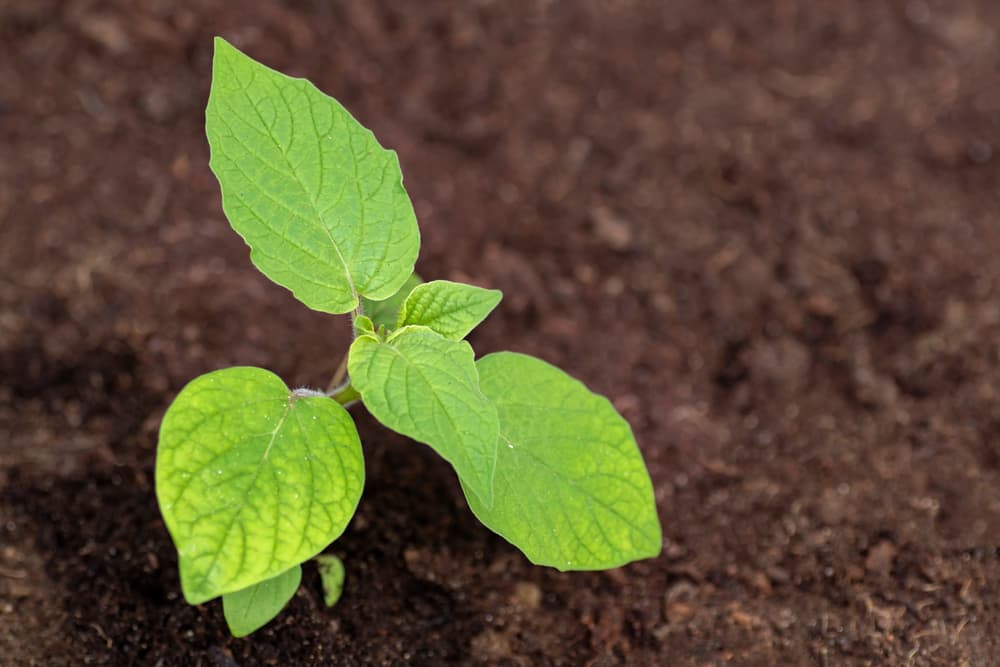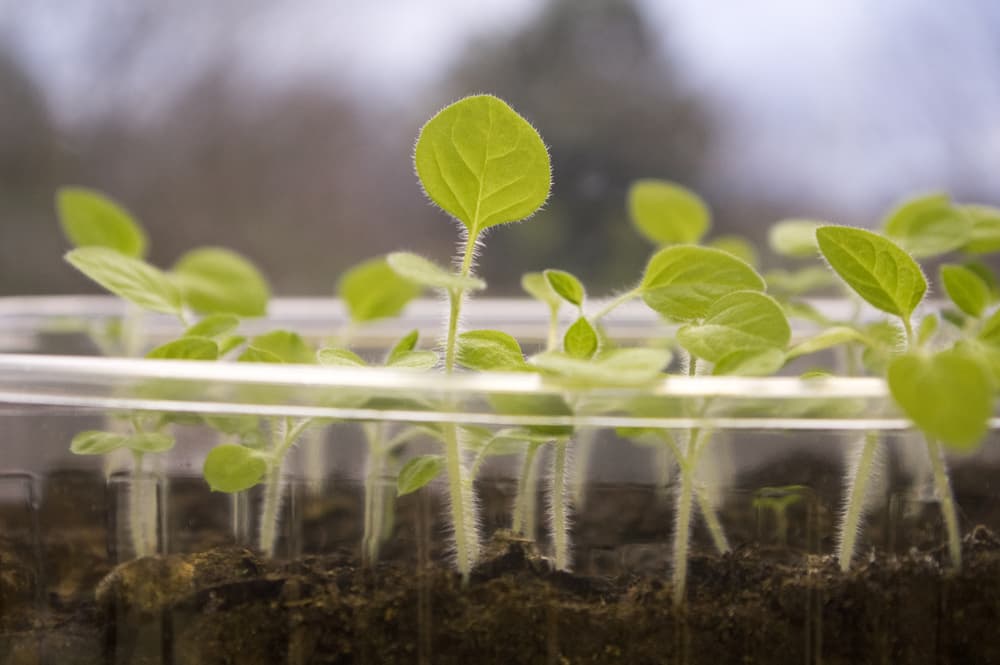FRUIT > PHYSALIS > PERUVIANA

Elizabeth is a Permaculture Garden Designer, Sustainability Consultant and Professional Writer, working as an advocate for positive change. She graduated from the University of St. Andrews with an MA in English and Philosophy and obtained a Diploma in Applied Permaculture Design from the Permaculture Association.
Reviewed By COLIN SKELLY

Colin is a Horticulturist and Horticultural Consultant with experience in a range of practical and managerial roles across heritage, commercial and public horticulture. He holds the Royal Horticultural Society’s Master of Horticulture award and has a particular interest in horticultural ecology and naturalistic planting for habitat and climate resilience.
IN THIS GUIDE
PHYSALIS GUIDES
Cape Gooseberry
Chinese Lantern
Tomatillo
Plants in the Physalis genus offer edible fruits that could be interesting additions to your kitchen garden.
In this article, we will focus on one of the two most common Physalis fruits – the Cape Gooseberry – and provide the details you need to grow them successfully here in the UK.
Overview
| Botanical Name | Physalis peruviana |
| Common Name(s) | Cape Gooseberry / Ground Cherry |
| Plant Type | Fruit |
| Native Area | South America |
| Hardiness Rating | H2 |
| Foliage | Deciduous |
| Flowers | Yellow flowers from which fruit form |
| When To Sow | January, February, March, April |
| Plant Out | May, June |
| Harvesting Months | July, August, September, October |
Sunlight
Preferred
Full Sun
Exposure
Sheltered
Size
Height
1 – 1.5M
Spread
1 – 1.5M
Bloom Time
June – August
Soil
Preferred
Loam, sand
Moisture
Moist but well-drained
pH
Any
There are many different fruiting plants within the Physalis genus which have edible fruits.
However, two stand out as options for UK cultivation: the tomatillo and the Ground Cherry or Cape Gooseberry.
Both of these plants are actually related to the tomato, peppers, aubergines and potatoes, since all are in the nightshade family, Solanaceae.
They are also more closely related to Chinese Lanterns or Physalis Alkekengi.
And like all these other edible nightshades, they can be excellent options for home growing.

In this article, we will focus on the Physalis fruit of Physalis peruviana.
This is commonly referred to as the Cape Gooseberry or Ground Cherry – though it tastes like neither gooseberries nor cherries.
In fact, this fruit has an interesting flavour which is like a cross between tomatoes and pineapple, or sometimes strawberry.
Physalis peruviana rather resembles tomato plants, but usually have stiffer and more upright stems.
Depending on their location and cultivar, they can grow to between 0.4-3m in height.
Though they are perennial in warmer climes, they are usually treated as annuals in temperate climate zones like here in the UK.
Why Grow These Fruit?
Cape gooseberries really are a great crop to consider growing alongside other warm, summer-season crops – they can crop really abundantly and they really do taste delicious.
They work really well in fruit salads, or in other salads, and can also be baked into pies and used in a wide range of other recipes.
For temperate climate gardeners who cannot really grow pineapples where they live, these could be the next best thing, as (in our experience at least) they do have quite a pronounced pineapple-like taste.

“Like the tomatillo, Cape Gooseberry is a fantastic plant for the home grower,” shares Master Horticulturist Colin Skelly.
“They provide a taste you can’t find elsewhere and are great eaten on their own or in a salad.
They are also perfect for where space is limited or in containers due to the large number of fruits they provide in a small space.”
Physalis peruvianas are also attractive plants – the fruits are encased within little husks as they grow.
These start off green and then turn whitish and papery over time – looking like little lanterns on the plant, with the bright bulb of the yellow/orange fruit shining through.
If you are looking to branch out from the most common edible annual crops, then these plants could be a very good option to consider.
How To Grow Cape Gooseberry
If you can grow tomatoes where you live, then you can grow cape gooseberries too. They need very similar conditions.
Like the tomato, they like warm weather and are not frost-hardy – they will do best where the temperatures are between around 12-20°C.

In cooler temperate climates like ours here in the UK, it is often best to grow these plants under cover. You can grow them in the ground or in large pots.
However, in milder gardens, you can grow these outdoors wherever tomato plants can be grown.
Remember that P. peruviana will need a sheltered position, in full sun or light shade.
Soil Requirements
It will fruit best in a relatively fertile, loamy soil, though it can also tolerate a much less nutrient-rich soil.
It is best not to grow these in too nitrogen-rich an environment, as this can encourage leafy growth and mean that the plant will not flower and fruit as well.
In terms of the pH level of the soil or growing medium, these plants are not particularly fussy, and they can tolerate even more acidic or alkaline conditions.

However, it is important to remember that these plants do require a moist soil, and will not thrive where conditions are especially dry.
Sowing Physalis Seeds
Physalis seeds are typically sown, like tomatoes, indoors before being transplanted into their final growing positions.
Start sowing around 6-8 weeks before the last frost date where you live.
Sow the seeds for cape gooseberries at around the same time that you sow your tomatoes, and you should not go too far wrong.
Sow the seeds into seed trays or small pots, and prick them out into their own individual containers once they are large enough to deal with easily.

One thing to remember when sowing these seeds is that the growing medium should only just cover the seed – germination can be fairly slow, so be patient as you wait for your seedlings to emerge.
Plant Out
You can plant out Physalis in your garden, or into a greenhouse or polytunnel as soon as all risk of frost has passed in your area.
Be wary of planting out too soon, and remember to harden off seedlings which have been growing indoors.
If you feel that you may have planted out too early, or there is a late cold snap, you can consider protecting your plants with a cloche until the weather warms up reliably.
When planting out Cape Gooseberry, a rough rule of thumb for spacing is that your plants should be placed around 45-60cm apart.

A container of around 50cm in width should accommodate one of these plants to maturity.
Containers (or raised beds) for P. peruviana should be at least 20-25cm deep for proper root development.
Companion Plants
As a member of the Nightshade family, Physalis fruit can be grown in a crop rotation plan with tomatoes and peppers.
Since these plants require similar growing conditions, they can work well in the same beds.
However, remember that these plants are related and so share pests and diseases, so make sure that you also include other companion plants.
Many of the plants that make good companions for tomatoes will also make good companions for Physalis fruit.
For example, underplant your crops with basil, oregano and parsley and consider sowing garlic and marigolds nearby.
Plant Care
If you have experience growing tomatoes and other warm-season crops where you live, then caring for Physalis fruit should be a breeze.
Generally speaking, these are a fairly low-maintenance annual crop for your garden.
Unlike tomatoes, they do not typically require any support when growing in a suitably sheltered spot.
Watering
Of course watering needs will vary depending on the stage of growth, weather conditions and a range of other factors.
However, as a general rule, make sure that your Physalis fruit gets at least 2.5-5cm of water per week.
As with tomatoes, it is especially important to make sure that these plants get enough water during the flowering and fruiting stages.
Mulching & Feeding
Remember to mulch between plants for fertility and to reduce evaporation.

Add a potassium-rich mulch rather than a nitrogen-rich one to encourage flower and fruit formation.
When your P. peruviana are flowering and fruiting, it is also a good idea to provide an organic liquid feed.
A comfrey tea, or any other potash-rich tomato feed will work well.
Pinching Out
While not strictly essential, you may find it beneficial to pinch off the growing tip of your plants while the shoots are less than 30cm tall in order to make them bushier and encourage more side shoots to form.
Harvesting Cape Gooseberry
As a general rule, you should expect to harvest your cape gooseberries from around 60-70 days after placing them into their final growing position.
You may find it interesting to watch your plants flower (from June onwards) and develop into fruits if you have never grown these plants before.
As mentioned above, the lantern-like calyx around each fruit will slowly turn from green to a light beige colour.

As soon as the calyxes are dry and paper-like, and you can see the fruits showing through, it is time to harvest.
You may find that some fruits drop off the plant before you get the chance to harvest – be sure to pick these up quickly so they do not break down.
P. peruviana may well self-seed if grown in optimal conditions, though when implementing a crop rotation system in a kitchen garden, this may not be desirable.
Collect the fruit and remove them from their lantern-like casings; these cannot be eaten.

You can consider saving the dried calyxes and using them as decorations inside your home – they look really pretty on strings, or in dried flower arrangements.
One final thing to note is that if you would like to grow cape gooseberries again the following year, you can save the seeds.
Saving the seeds of Physalis fruit is the same as saving tomato seeds; if stored correctly, these can be retained to plant next year.

